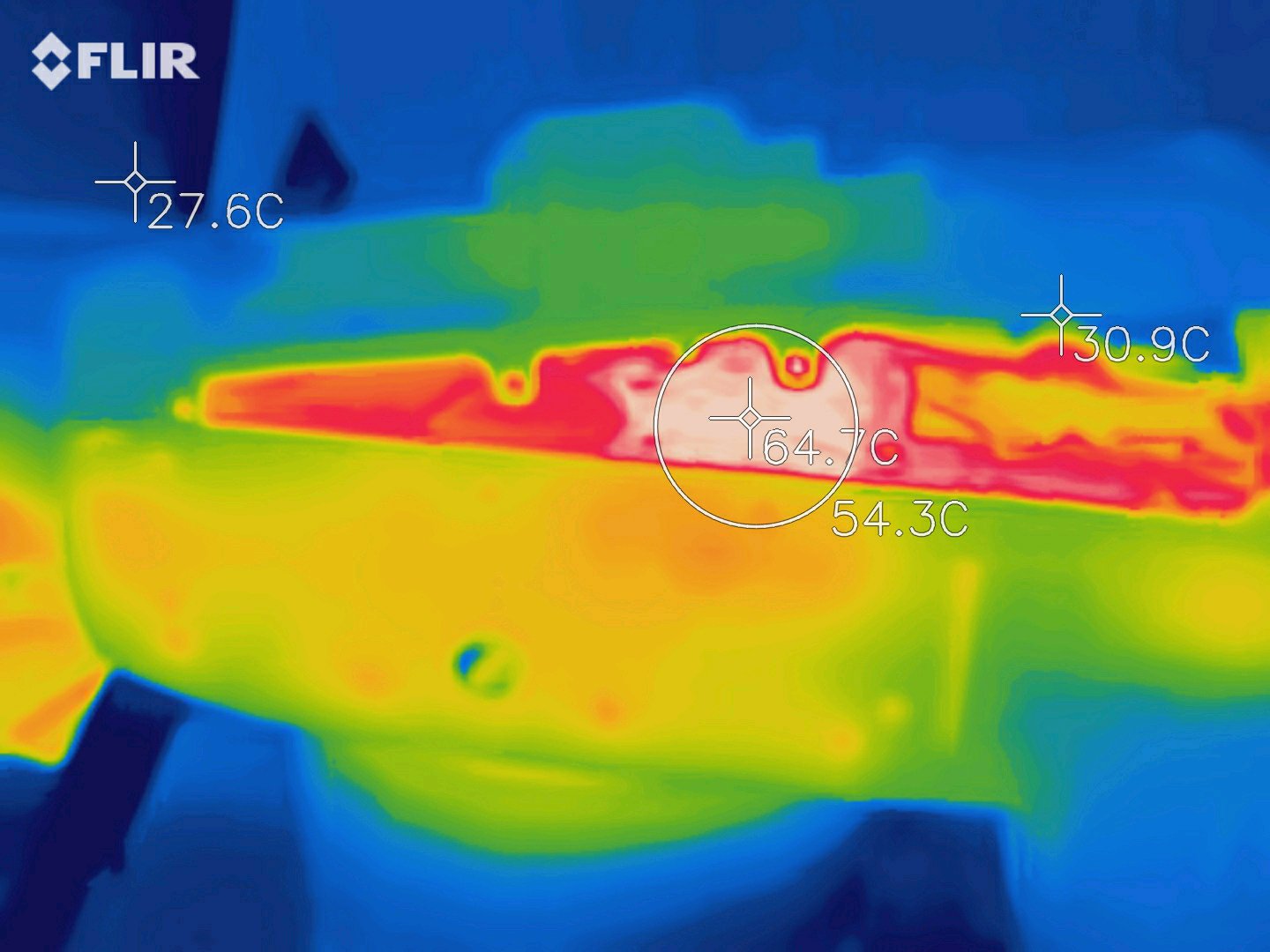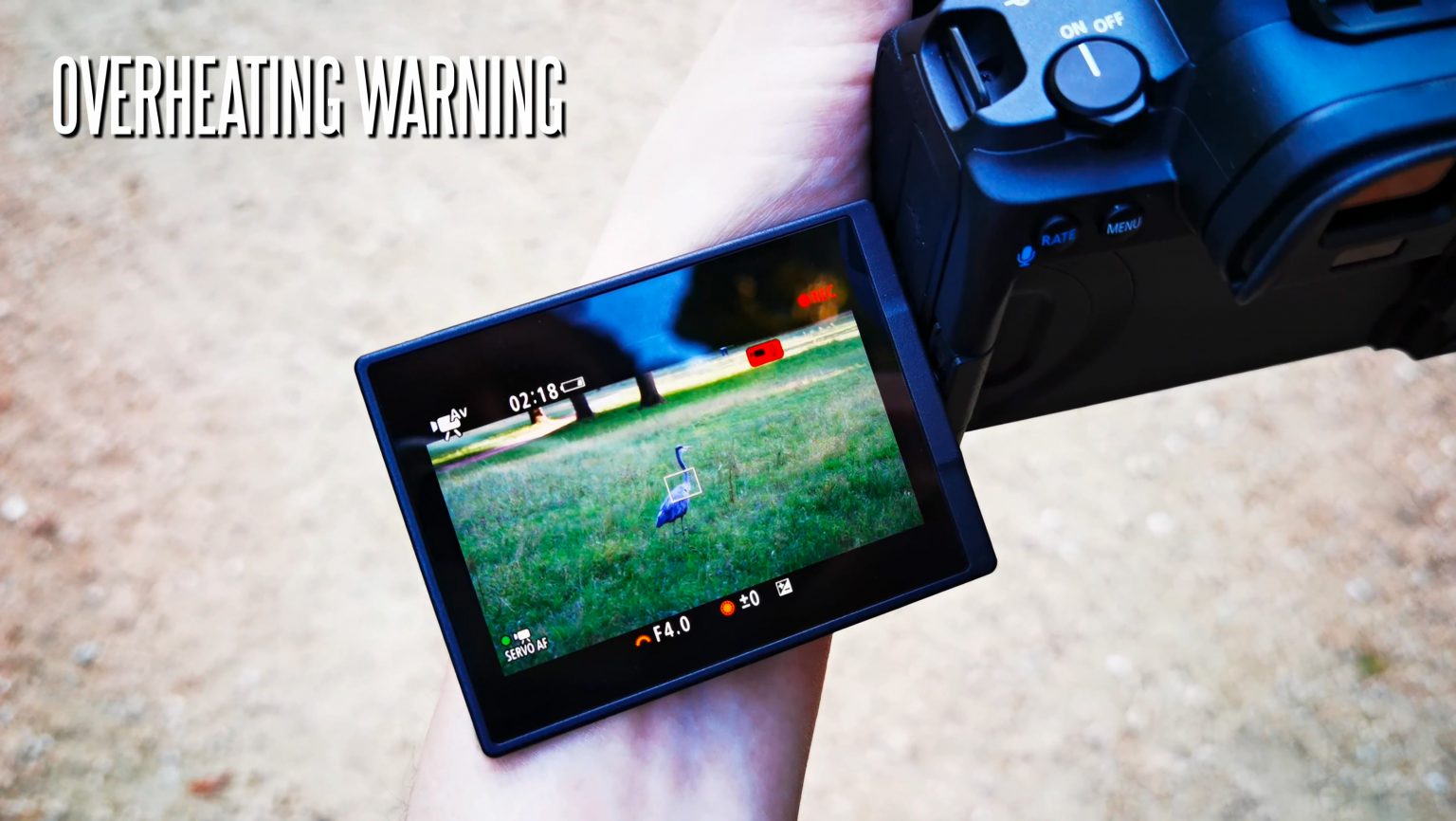
Because we now have a solution to reset the overheating timer on the EOS R5 safely, and not during recording or any hacks required, I have decided to put out a series of stress tests to see if the camera behaves reliably and whether it is comfortable to touch for prolonged periods.
Does it melt?
How long is it possible to record in the most demanding 8K video mode?
Can you get low temperature burns?
For it is now certain most users will be using this reset technique on a shoot.
It is important then to find out if this stresses the camera, or whether it can cause dangerous temperatures – either for itself or for you.
Now, I have not heard back from Canon and no engineer has come to me with any valid info about overheating. So it looks like customers are going to have to do our own research. Whenever Leica had an issue with LOG, or battery peak current draw, or Sony had issues with inter frame noise reduction on the FS5, I have always discussed matters face to face. It is a great shame Canon has chosen not to do the same with me over this issue.
In my first Stress Test I was able to record 8K in 20 minute segments one after the other with no significant break, until the battery ran out. During this time the camera body did of course feel warm. My EOS R5 did not crash or behave as if any of the internal components were stressed during my first 8K test of up to 1 hour before the battery died. I did however encounter an issue with the CFExpress card. At one point this seemed like it was throttling and could not maintain top write speeds. The camera would show the “slow card” warning during the first few seconds of an 8K clip. After taking the CFExpress card out and leaving it to cool outside the camera for 2 or 3 minutes, it was back to recording normally again. I would recommend not using CFExpress cards for longer recording sessions. It is clear that if you want to keep the camera as cool as can be, use an SD. You can record 8K (in 10bit Long GOP codec format) to SD cards on the EOS R5, as well as 4K HQ.
Roger Cicala’s EOS R5 heat emissions article actually measures what goes on externally. As his test shows, magnesium alloy isn’t as good a conductor as aluminium or copper, so the casing absorbs heat relatively slowly. However I expect that over time, the casing will absorb enough heat that it gets closer to the temperatures emitted within. In Roger’s test, 43C was measured on the back of the casing directly above the CPU and 40C around the side near the CFExpress slot after 20 minutes of 8K. The base of the camera also received some of the heat.
I am no doctor (Roger Cicala is!) but I would suggest 50C surface temperatures are probably where things get uncomfortable especially over long periods you could get low temperature burns. So if the internal camera components run at 65C for long enough – there might be a risk that the casing may rise to 50C given time. 65C isn’t a bother for a robot, CPUs run fine at this temperature. It could however be an issue for human skin, although I’ve had MacBook Pros on my lap that have felt like a wooden panel from a sauna! At least you know when it gets uncomfortable, so I find it hard to believe people can unwittingly scorch themselves.
How hot does the internal camera temperature (in EXIF data) report over long 8K sessions? How hot does the surface die temperature measure internally for the CPU and RAM? Here’s some data on that from Electroholic Anonymous & Horshack:

The internal surfaces during 8K recording were famously measured by the user “Math Class” on Baidu:

In the “Electroholics Anonymous” test, 8K went for a mammoth 1 hour 40 minutes, before the user ended the test. The internal temperature sensor data plateaus around the 40 minute / 60C mark, and did not go above 63C.
When I’ve been recording 8K for over an hour, the outside casing feels just on the verge of uncomfortably hot. So it might be this that Canon is trying to avoid. The camera hardware however does seem to be happy going for long periods in 8K without crashing.
This means that all VRM chips, power circuitry, CPU, RAM, card, sensor – basically everything electronic – are within their comfort zones. If they were not, the camera would hang up or shut down, so that would be your first warning that the stress test has been failed and the real limits of the EOS R5 reached.
In a very sales and marketing orientated interview with Johnnie at Cinema5D (that annoyingly, doesn’t acknowledge or credit any of the discoveries or overheating research by users), we FINALLY have our first attempt by a Canon employee at explaining overheating:
“It is important that we evaluate the primary customer for each product and decide what features would be required by that typical user. We do not ‘cripple’ our cameras, our aim is always to focus the product better to the typical user.
“One issue manufacturers face is feedback that cameras are difficult to use and some people prefer to use their smartphones.”
- Katsuyuki Nagai-san (Canon Europe)
I’m sorry but does Nagai-san really think customers of a $4000 professional mirrorless camera find it a bit tricky and revert to their smartphone?
Bizarre comment.
“To ensure the safety of users, we control the recording time by monitoring the temperature inside the camera body and the last usage status information (operating time).”
It has been proven by the timer reset (date/time change and battery pull) that temperature isn’t the overriding factor controlling recording time.
With the EXIF temperature reporting 60C at the end of 20 minutes of 8K recording, the camera is ready to go straight away at the same temperature if you do the timer reset.
We do not recommend resetting the camera via the removal of the battery during recording or via dismantling the camera.
This response seems a bit out of date because it is not necessary to remove the battery during recording or via dismantling the camera any more.
If the internal memory is reset in this way, the camera may become unusable, temperature control may no longer work correctly, and the camera may overheat more than expected resulting in the power supply components not operating correctly.”
Well I have not seen any evidence of this yet.
If the power supply chips have a lower temperature limit than other parts, Canon haven’t helped themselves by overlaying the power board directly over the hottest part of the camera (the CPU and RAM).
Interestingly Roger Cicala also mentions power supply components in his heat emissions blog post. “Toshiba voltage converting chips have a suggested maximum operating temp of 60°C before they dramatically lose efficiency”, he says. I think Roger looked up the specs by identifying the chip from his teardown photos, and found a FAQ online.
With a steady stream of current and voltage required by all the parts in the camera, any interruption or variation from a stressed component would result in abnormal operation and a crash clearly visible to the user.
Like I said, this is what my series of Stress Tests are going to look out for.
Nobody wants to brick their camera or do something dangerous without understanding the consequences first. All I can observe so far, is as other users have seen – the camera goes well past the 20 minute 8K limit with no abnormal behaviour.
What we really need to do is measure the EOS R5 external and internal temperatures in comparison to another similarly specced camera, with both of them running 4K HQ (oversampled from a high resolution sensor). The other camera would provide a useful benchmark.
Until the behaviour of the camera is better understood under conditions Canon apparently did not want to venture, for whatever reason, the EOS R5 and R6 are some of the worst hybrid cameras you can choose for long recording sessions. I recommend other products for this and to use the timer reset at your own risk.




